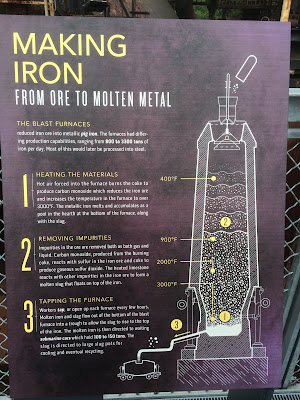Inspired by hearing Senator Chris Murphy (D-CT), on MSNBC’s Morning Joe, talk about reading poetry by Harlem Renaissance poet Langston Hughes to his son’s school class during this year’s Black History Month (February 2019), I finally completed this blogpost discussing some earth science aspects of Zora Neale Hurston’s novel, Their Eyes Were Watching God (1937). Hurston was a friend and collaborator of Langston Hughes.
As I usually embarrassingly do, on Tuesday, September 19, 2017, I finally finished our monthly book club selection, Their Eyes Were Watching God, by African-American author, Zora Neale Hurston, half an hour before the meeting. The book’s climatic events took place during the “Forgotten Hurricane” (AKA Great Okeechobee Hurricane or San Felipe Segundo Hurricane) that made landfall at West Palm Beach, Florida, on September 17, 1928. The subsequent breeching of the southeastern 5-foot-high muck dike of Lake Okeechobee resulted in catastrophic flooding from central Florida to Palm Beach on the east coast; more than 2500 people drowned, most of them African-American migrant farm workers. Tea Cake, third husband of Hurston’s main character, Janie Crawford, was a fictional victim. Coincidently with my finishing this book, Category 5 Hurricane Maria was devastating Puerto Rico, the most intense hurricane to hit that island since the Okeechobee Hurricane almost exactly 89 years before. Maria was initially on the same path as the 1928 “Forgotten Hurricane”, but after passing over Puerto Rico, it turned north, missing Florida.
 |
| FIGURE 1: Path of the Forgotten Hurricane of 1928 |
 |
| FIGURE 2: Path of Hurricane Maria, 2017 |
The muck dike gave way around 9 PM, September 17, 1928, near the town of Belle Glade, on the south-southeastern edge of Lake Okeechobee: “it only took an hour after the dike gave way for floodwaters to peak at a fatal 12 feet”, according to a 1988 Sun Sentinel article. In Hurston’s novel, Janie and Tea Cake lived in a migrant shack where “only the dyke separated them from great, sprawling Okechobee” [sic]. The storm became generally forgotten due to the early onset of the Depression in the affected area, poor documentation of the destruction, downplaying the tragedy to avoid loss of tourism, and the sad fact that most of the dead were African-American.
Is there any connection in the novel to the geologic-carbon theme of this blog? Answer= Yes, muck. “We goin’on de muck.”
“Whut’s de muck, and where is it at?”
“Oh down in de Everglades round Clewiston and Belle Glade where dey raise all dat cane and string-beans and tomatuhs…
. . . Dirt road so rich and black that a half mile of it would have fertilized a Kansas wheat field. .
. . .Yuh can’t live on de muck ‘thout yuh take uh bath every day. Do dat muck’ll itch yuh lak ants.
. . .Work all day for money, fight all night for love. The rich black earth clinging to bodies and biting the skin like ants."
According to Wikipedia, “muck is a sapric soil that is naturally waterlogged or is artificially drained... a sapric is a subtype of a histosol where virtually all of the organic material has undergone sufficient decomposition to prevent the identification of plant parts. . . The World Reference Base for Soil Resources (WRB) defines ‘sapric’ as a histosol having less than one-sixth (by volume) of the organic material consisting of recognizable plant tissue within 100 cm of the soil surface. . . Muck soils are defined by the USDA Natural Resources Conservation Service as sapric organic soils that are saturated more than 30 cumulative days in normal years or are artificially drained. In other words, it is a soil made up primarily of humus from drained swampland.”
In Chapter 1, Section 2, of his 1947 University of North Carolina (Chapel Hill) dissertation on “A History of the Everglades of Florida", Junius Elmore Dovell described the soils (mucks and peats) of the Everglades and Lake Okeechobee area and the various surveys and classifications done in the early half of the 20th century as interest in regional agricultural development grew. He writes that the best land, where Janie and Tea Cake picked beans, was custard apple muck; the names of Florida mucks derived from the primary vegetation initially growing at each location. Dovell reported the custard apple muck, in a 1915 survey, was found to be 40-75 inches thick over a peat that then extended down to limestone bedrock at 122-150 inches depth.
 |
FIGURE 3: “Major landscape types in the Everglades before human action.” The area described by Tea Cake “round Clewiston and Belle Glade” is under the words “Custard Apple and” at the SW edge of Lake Okeechobee. By US Geological Survey through Wikipedia. |
*********************
Zora Neale Hurston, novelist, anthropologist, anthologist, was a major author of the Harlem Renaissance of the 1920’s. She was born in Alabama, but raised in Florida. Her work was, like the Great Okeechobee Hurricane, forgotten for about four decades due to politics (she was more conservative than some in her literary circle) and to her use of dialect being viewed not as preservation of culture and linguistics, but promoting pejorative stereotypes of African-American vernacular. Her career fortunately has had its own posthumous Renaissance since 1975 with the publication of Alice Walker’s article, “In Search of Zora Neale Hurston”, in Ms. Magazine. Hurston’s works, including Their Eyes Were Watching God, have been rediscovered, reissued, and Hurston is now rightly recognized as a “pre-eminent writer” of the 20th century.
https://www.allisonbolah.com/site_resources/reading_list/Walker_In_Search_of_Zora.pdf Alice Walker’s 1975 Ms. Magazine article, "In Search of Zora Neale Hurston".
https://www.zoranealehurston.com/about/ Biography on Hurston official website
https://www.newyorker.com/magazine/1997/02/17/a-society-of-one New Yorker article on Hurston’s life and her writing
https://barnard.edu/news/archaeology-classic-celebrating-zora-neale-hurston-28 Description of Alice Walker’s search for Hurston
























